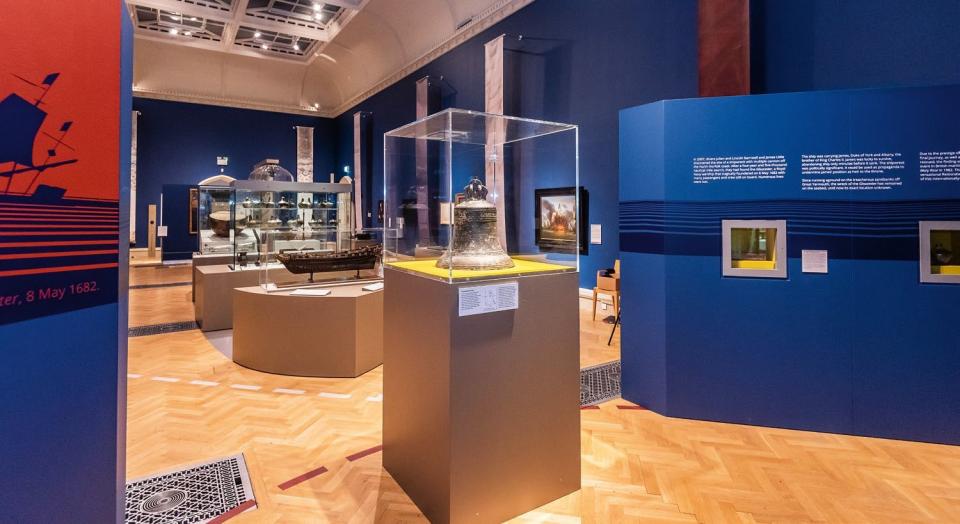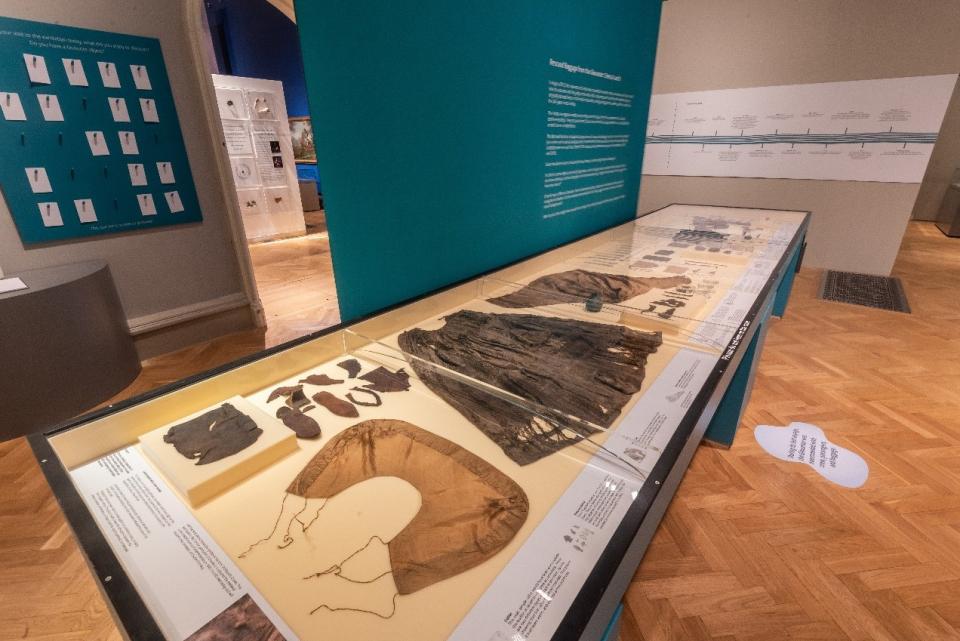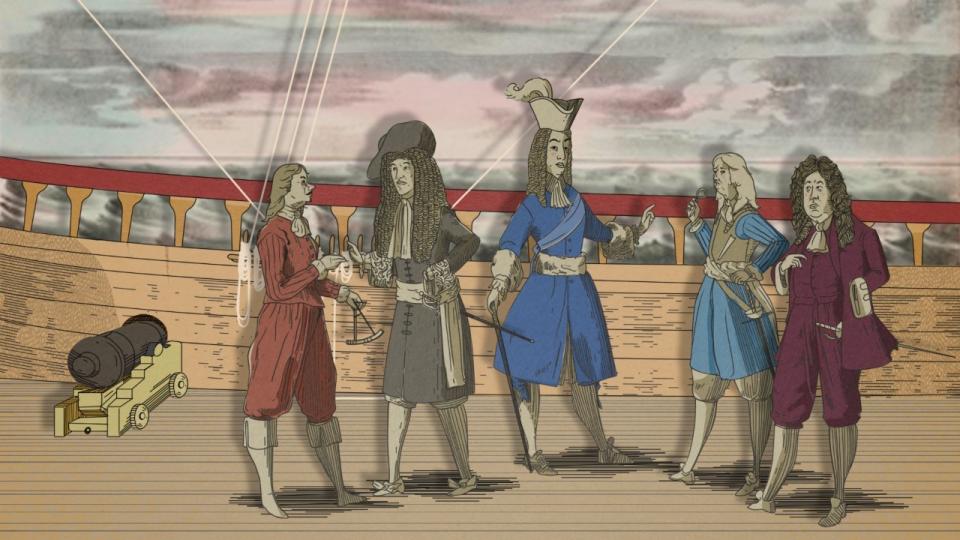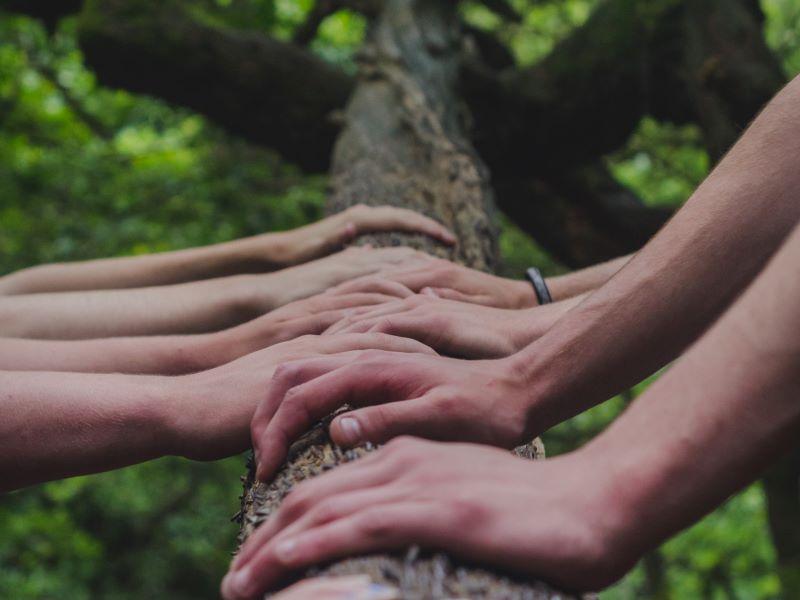British 17th-century history is far less well understood today than most other periods from our island’s story. Capturing the public imagination about its turbulent, hedonistic and theatrical dimensions was a key aim for Benjamin Redding and me, as University of East Anglia (UEA) historians, in the exhibition The Last Voyage of the Gloucester: Norfolk’s Royal Shipwreck, 1682, which was co-curated with Norfolk Museums Service curators Francesca Vanke and Ruth Battersby.
The story of the ship’s tragic wrecking on sandbanks in May 1682 and its discovery in 2007 could not have been brought to life without the camaraderie between the exhibition’s curators and the Gloucester wreck discoverers, brothers Julian and Lincoln Barnwell of Norfolk Historic Shipwrecks.

Teamwork, teamwork and more teamwork
This rapport, built on the trust that close partnership working creates, has been central to the project’s success. The exhibition in Norwich Castle Museum and Art Gallery had showcased key artefacts from the 542 rescued to date from the wreck site, many of exceptional quality and some unique. The historical research of the UEA team, funded by the Leverhulme Trust, had been used to bring objects to life and tell the stories of the warship’s 30-year naval career and the people associated with it, all situated against the tumultuous political events of the Restoration.
Norfolk Museums Service curators and the in-house designers, experienced in creating exhibitions that communicate with visitors of all ages and backgrounds, helped to translate our cutting-edge research for wider audiences by creating multimedia displays and atmospheric staging.
- Spotlight guides: THE Awards 2024: learn from the best in UK and Irish higher education
- How to be proactive when amplifying research papers
- Amplifying research: five features of successful impact generation
Having a team with varied expertise, prepared to debate and argue for what they believed in, was fundamental to creating an exhibition that felt genuinely exciting and fresh. We certainly haven’t always agreed on best ways forward, and there are battle scars, but the arguments were definitely worth having as they made us think – and rethink – our ideas.
Measuring impact on visitors
Having worked on the exhibition for over three years, the team was gratified by its popularity, attracting record numbers – about 70,000 attendees across its seven-month run – and bringing visitors to Norwich from across the UK and internationally.
In the exhibition, a discussion board with Post-It-style notes was used to collect immediate responses from visitors in a couple of words, with terms like “atmospheric”, “exciting”, “educational” and “well-researched” appearing. Discursive comments collected via forms, digital and physical, were equally positive: “Beautifully curated, with excellent historical background information”; “Stunning, and such an opportunity for Norfolk.”
Curators offered exhibition tours, with gallery staff also giving daily tours, and we gave talks on in-progress research or curatorial choices, giving us access to direct and live visitor responses. Simply put, this is gold dust, immensely valuable when planning future project phases.

Telling new stories in accessible formats
We wanted to bring the shipwreck to life in the first room, the Norwich Union gallery, to share the excitement and danger of travelling in the 17th century through capturing the atmosphere of being on board a royal ship at sea with the heir to the throne, James, Duke of York, and his court. We also tried to be respectful of those that lost their lives on the voyage by creating a memento-mori-style display of broken or fragmentary artefacts from the wreck, buffeted and worn by over 300 years on the seabed.
We included an original drama about who or what was to blame for the shipwreck by playwright Steve Waters. It was voiced by UEA students and alumni, colourfully animated by Eye Film, and then captioned for maximum accessibility. We even asked visitors to vote for who they thought was most responsible for the wreck. The Duke of York came out top, not very closely followed by the sandbanks.

In the exhibition’s second room, our focus was on the ship’s long underwater life, its 2007 discovery and the resulting archaeological and scientific processes of artefact rescue and conservation. A dive-through experience, created in partnership with Maritime Archaeology Trust with a soundtrack of a diver breathing, allowed visitors to immerse themselves in the undersea world that is now the ship’s resting place.
Attracting media attention
Although our partnership working has been forged over several years, one career-defining, even life-changing moment stands out: on 10 June 2022, the discovery of the Gloucester was publicly announced and, simultaneously, UEA’s research on the shipwreck was published open access in the prestigious journal English Historical Review.
The news quickly went global, with feature stories and interviews saturating the media. Many major international newspapers, magazines, websites and radio and television outlets ran stories, with coverage across nearly 2,000 outlets to date. Again, partnership working has been vital. Our UEA media team colleagues Simon Dunford, Cat Bartman and Laura Potts were central to the delivery of a communications strategy focused on how the shipwreck impacted people’s lives in the past, and how it can inspire change by creating a major heritage attraction in Great Yarmouth.
Looking ahead
Spearheaded by General the Lord Richard Dannatt, the charitable Gloucester 1682 Trust has been formed to support the conservation and display of artefacts. Housing them in a new museum in one of England’s most deprived areas will allow the Gloucester’s remarkable story to be owned by the local community.
I have learned so much through this experience, about both myself and effective communication, and for colleagues who may have similar opportunities:
- Say “yes” to new challenges that will stretch you – be bold!
- Learn from those around you but be generous with your ideas – co-creation is fun!
- Socialising can enrich a team dynamic and be an efficient way to generate new ideas – go for a beer together (other drinks are available)!
The Gloucester story, then and now, is not just about a ship or shipwreck, but goes much deeper. It expresses something elemental about human powerlessness when faced with the forces of the sea and speaks of people’s overconfidence when encountering the natural world. These stories have messages for today, and for tomorrow, if only we can listen.
Claire Jowitt is professor of Renaissance studies at the University of East Anglia. The Gloucester Project was shortlisted in the Research Project of the Year: Arts, Humanities and Social Sciences category in the 2024 THE Awards. A full list of nominees can be found here.
If you would like advice and insight from academics and university staff delivered direct to your inbox each week, sign up for the Campus newsletter.




comment